On Rutabagas, Goats, and the Avant-Garde
February 18, 2014 § 2 Comments
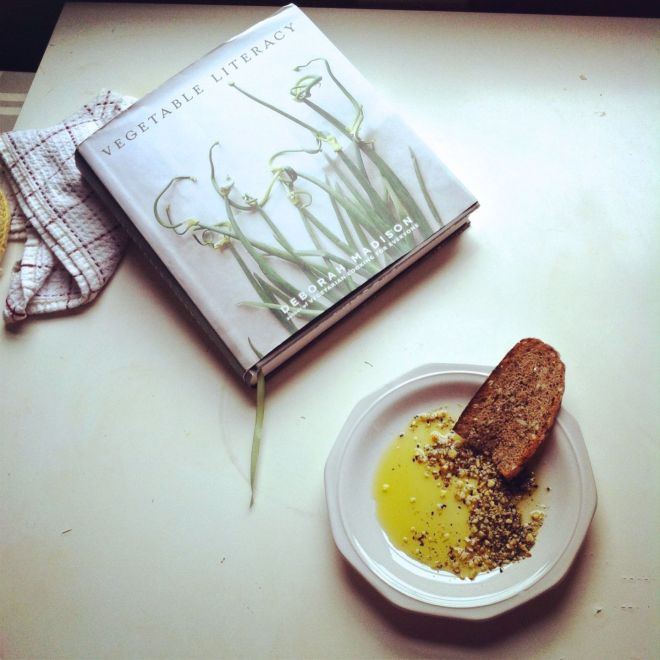
It’s important to note, right off the bat, that I have never been a willing subscriber to trends. As a child I constantly rebelled against my generation’s tastes- whether it be in the arena of entertainment, music, or clothing. I played Star Wars Trivial Pursuit and badminton while the other kids traded Pokemon cards and were sorted into basketball teams. I listened to the Beatles and Bread on repeat while my friends listened to the Spice Girls and Justin Timberlake. I wore corduroy overalls and dresses my mother made, while the other girls wore bell-bottoms and mini-skirts. It would be easy to assume I’ve always had a penchant for the hipster.
In reality I simply gravitated toward the underdog, no doubt a result of romantic tendencies fostered by too much fantasy literature and too many torch songs. I was always drawn to under-appreciated sports, the magic of passed-down stories, and any wallflower of the current moment. It’s a soft spot I carried with me into the world of cooking, and into the arena of ingredients.
Take, for example, the rutabaga. An intriguing vegetable if ever there was one, it reminds me remarkably of the unfashionable but lovable goat, if one can compare vegetables and animals in any vaguely lucid way. Like the animal, a rutabaga is slightly scruffy and sharp smelling in its raw state. It seems a little off-putting at first glance, a root-riddled, green and purple-tinted skin rivaling the unwelcoming wiriness of a goat’s bristled coat. But after a good scrubbing and a long braise it relaxes into the gentlest of vegetable-creatures.
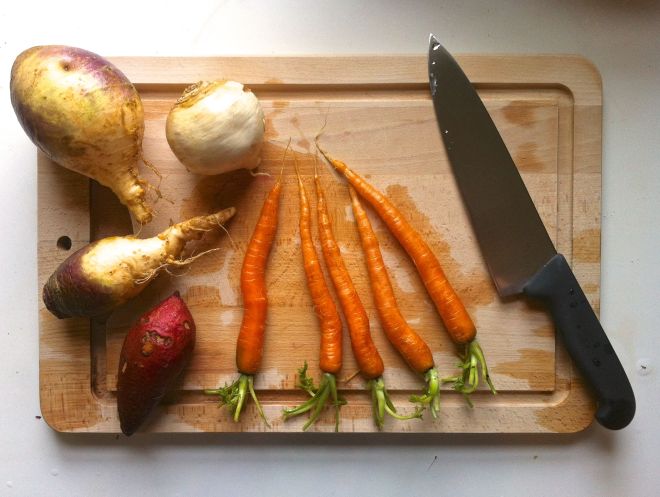
Beyond animal analogies, the braised rutabaga is a sweet and cozily starchy dinner, especially when the braise is rounded out with slouching onions, tender carrots, and softly stodgy sweet potatoes and turnips- and especially when the whole mess is finished off with a couple spoonfuls of spicy mustard. I will stand firmly behind the rutabaga for years to come, assuring it of at least one steadfast old friend.
For an introductory course in Rutabaga Appreciation I approve of tossing long slices in a little egg and flour and frying it into crisp-on-the-outside and creamy-on-the-inside batons. I also thoroughly advocate for its moving substitution for parsnips in Yotam Ottolenghi’s winning Ultimate Winter Couscous, with preserved lemon and apricots.
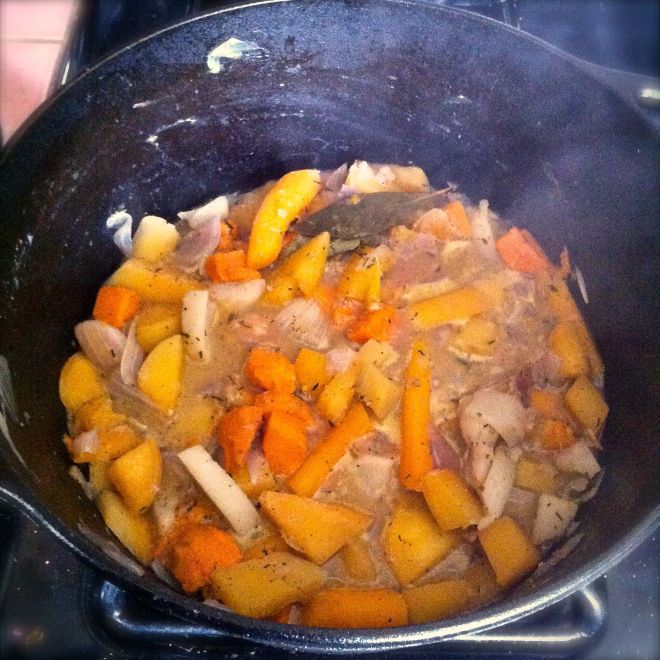
However, after you’ve really settled into this vegetable as the wintertime staple it longs to be, the following iteration is the one for you. Hidden between the kohlrabi and turnips in “The Cabbage Family” chapter of Deborah Madison’s Vegetable Literacy, glows this little gem of a stew. A Winter Stew of Braised Rutabagas, with Carrots, Potatoes, and Parsley Sauce is intensely good. It is the kind of dish that you can feel instantly bring a rain-drenched body temperature up by 5 degrees, the kind of dish that supplies the eater with the ingestible equivalent of a neck rub and foot massage after a long day of work. The sweetly caramelized flavors of the root vegetables are deepened by a good simmer in chicken stock, and brought into keen definition by a mustardy glaze and a spoonful of verdantly zingy parsley sauce.
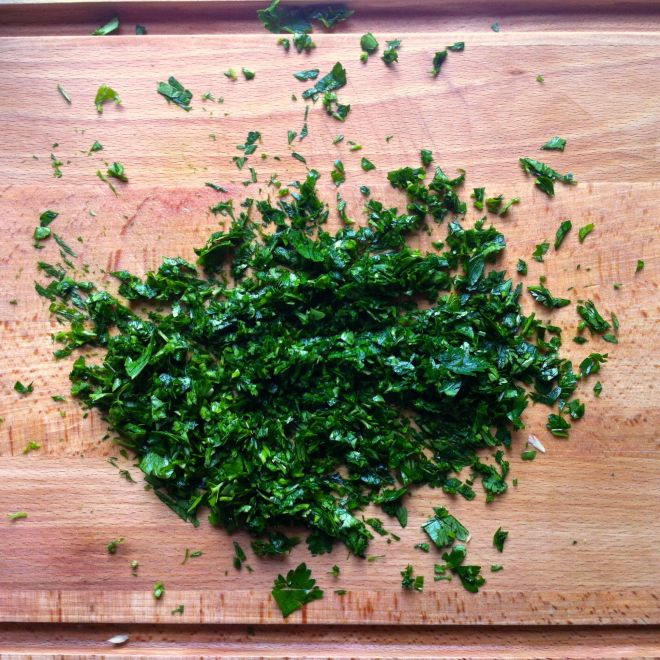
Make it as soon as you can get your hands on a few rutabagas, but be warned: it comes with a pair of ironically large horn-rimmed glasses and patterns whatever you are wearing in plaid, because this is definitely not a popular vegetable guys. You are diving straight into the avant-garde with this one. Don’t worry, the water is really quite welcoming.
Winter Stew of Braised Rutabagas with Carrots, Potatoes, and Parsley Sauce
from Deborah Madison’s Vegetable Literacy
- 1 tbsp butter
- 1 tbsp sunflower seed oil
- 1 onion, cut into 1″ dice
- Generous 1 lb of rutabagas, thickly peeled and quartered
- 8 oz yellow-fleshed potatoes (I substituted 1 small sweet potato and one turnip), scrubbed and cut into neat wedges
- 2 hefty carrots, scrubbed and cut into 1 1/2 inch lengths
- pinch of dried thyme
- 2 bay leaves
- sea salt
- 1 cup water or vegetable/chicken stock (use stock- it’s tastier!)
- 2-3 tbsp mustard (something coarse and spicy is best)
- freshly ground pepper
- Parsley Sauce (recipe follows)
Heat the butter and oil in a Dutch oven or wide sauté pan with a lid, over medium heat. Add onions, rutabagas, potatoes, carrots, thyme and bay leaves. Turn to coat and season with 1 tsp salt. Cook over medium heat for 10 minutes, turning occasionally. Add the water or stock, turn heat to medium-low and cook, covered, until the vegetables are just tender, about 20 minutes. Meanwhile, make the parsley sauce.
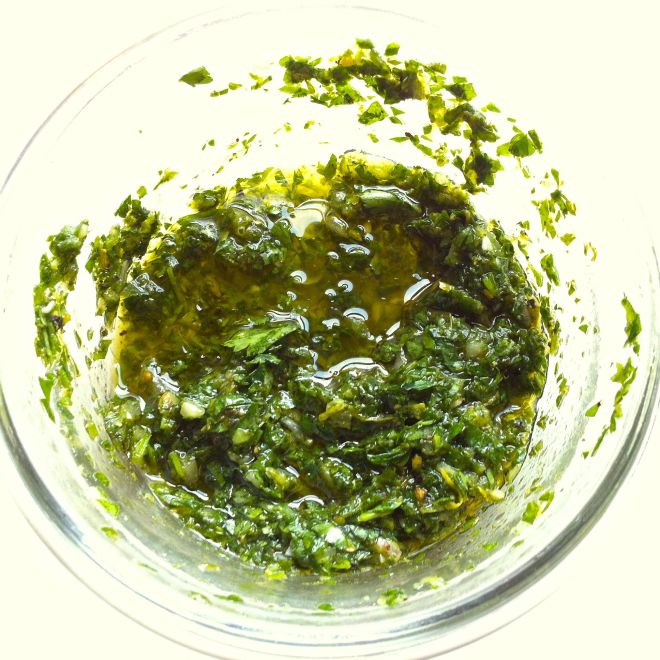
Parsley Sauce:
- 1 clove garlic
- sea salt
- 1/4 tsp black peppercorns
- 1/4 tsp fennels seeds
- 3/4 cup finely chopped parsley
- 3/4 cup olive oil (this seems exorbitant- I used about 1/3 cup)
- 1 large shallot finely minced
- zest of 1 lemon
- lemon juice
Pound garlic, 1/4 tsp salt, peppercorns, fennel seeds and 2 tsp parsley in a mortar, making a smooth paste. Stir in the rest of the ingredients, adding lemon juice little by little until the balance feels right to you.
Now go check on the stew: Stir in the mustard and continue to cook sans lid to reduce the cooking liquid to your liking (I like mine saucy, with a good glaze on the vegetables and a bit in the bottom of the pot). Discard bay leaves and taste for seasoning, adding fresh-ground black pepper to your liking. Finish each serving with a generous spoonful of parsley sauce.
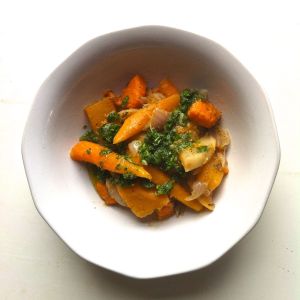

Book idea: “Vegetable Creatures,” a whimsical storybook detailing the exploits of an adventuresome rutabaga and his pet beetle while they evade pursuit by the evil Dr. Mustard Green.
(I like the animal/vegetable comparison.)
Hey you- thanks for reading this little blog as it tries to get its sea legs! Let’s do it. I am in to illustrate.